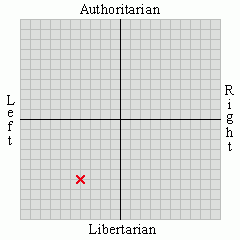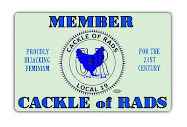U.S. aviation regulators are investigating three reports since Nov. 16 of drones flying close to airliners near New York’s John F. Kennedy International Airport.Drones have been flown by hobbyists for decades, only they were called "radio-controlled model aircraft". R/C planes were, at first, all scratch-built and expensive in either materials or time or both to build. Their owners did not fly them at any great distance from where the planes were launched.
Pilots on a JetBlue flight told the Federal Aviation Administration they spotted a drone as they approached JFK yesterday at 1:50 p.m. local time, the agency said in a statement.
Crews on two flights nearing JFK, one operated by Delta and the other by Virgin Atlantic, saw an unmanned aircraft shortly after 8 p.m. on Nov. 16, according to the statement.
But now there are quad-rotors and other drones that don't look like models of aircraft. They carry cameras and are flown, not for the joy of flying them, but as camera platforms. Most of the drones don't have any readouts back to the operator, other than maybe a video signal. The operators don't know how high they are flying them and a significant majority of them don't seem to care.
Two morons in New York City recently flew a drone into the airspace commonly used by light aircraft following the Hudson River. That they didn't endanger more aircraft than they did was due to them flying their drone at night.
One of these idiots is, sooner or later, going to fly a drone into a collision with an airplane. And then, all of the foot-dragging and caution of the FAA in hesitating to allow drone flights will be seen as being justified.









9 comments:
When will the first airliner crash be blamed on a 'drone'? A year, three years, five years???
I suspect the first airliner taken out by a drone will be a military mistake. (ala the Malaysian airliner shot down over the Ukraine.) I don't believe the current hobbyist drones flying around are big enough to do much of anything more hazardous than a bird to an airliner.
-- BM
I don't think a drone would bring down a large aircraft. Bird strikes are a common occurrence, and it took an entire flock of Canada geese to bring down Capt Sullenberger's plane. In my career I've seen five aircraft that have hit large birds (a goose, a seagull, a golden eagle, a black vulture and a raven) All the aircraft landed safely and only two needed repairs. The Cessna 206 that hit the eagle needed the leading edge of the wing replaced back to the spar. I was in the cockpit when we struck the raven, when we got out there was a smear of frozen blood on the stabilizer and that was it.
They fire chickens at 500mph at airliner windshields to test them and the engine manufacturers fire hail and bird carcasses into the fans to obtain airworthiness certification.
Al_in_Ottawa
So, what about an armed drone. Protected under 2nd Amend. rights? Someone will push for it. Same with an actual armed drone. Just a matter of time.
Position lights, an onboard altimeter and a regulation requiring both for aircraft heavier than a few pounds could help a lot.
The increased range of these R/C planes is often due to mobile phone communications replacing the normal radio uplink and in part feasible due to onboard cameras replacing a permanent visual tracking of the R/C plane.
Mobile phone comm isn't 100% reliable, though. So an autopilot function during loss of comm contact (copters hovering, fixed wing planes circling) could be required by redulation as well.
Couple of,thoughts:
1) Al, while the drone itself might not take an aircraft down, the response of a pilot to an unexpected "object" in his flight path is less predictable. Given that these "hobbiest" drones are commonly spotted in areas where planes of all sizes are low and slow, a sudden reaction by a pilot could cause an aircraft to depart from controlled flight.
2) S O, you can bet on the FAA (which the NTSB has affirmed has regulatory responsibility and who Congress has directed to create rules) would never keep the list so short. Also, given that these craft already have rules that these drone operators are violating, there is no reason to think the FAA would be interested in expanding, rather than reducing, the areas where these devices can legally operate.
As a final thought, with Mode S and ADS-B mandated by 2020, I could easily see the "safety" argument used to expand that mandate to cover all aircraft and drones...as a way to increase surveillance of the populace.
CenterPuke,
I pose a serious question for you. Has the FAA been pursuing improved safety in the push for ADS-B and Mode S? Or is it more about dreaming what could be done with the budget for ops and maintenance of ground based radar and navigation facilities? On the ATC side, it seems clear to me we are suffering from the same thinking of reducing the large budget for controllers with automation, safety be damned. If we are worried about safety, I'm much more concerned with the complete lack of security consideration that has gone into ADS-B. I suspect we'll see significant mischief there long before physical presence of drones becomes a problem.
The FAA has been pushing the NextGen dream as the solution to all our problems (mostly to do with capacity due to airlines in a hub system) without seriously showing how those problems are actually resolved. Maybe it would have helped after the Chicago Center fire. But for the day-to-day issues with expanding traffic, the only thing it seems to help is cutting safety margins to the bone, perhaps to the extent it will lead to more accidents and loss of life.
The airspace is still fundamentally limited by the raw capacity of runways in major metro areas, where the planes want to go. If airlines were given operationally significant financial incentives to reduce overloading at those airports, we'd be well on the way to making a difference. Building more runways would help. Building more airports might help, too, but the airlines have perfected the art of ignoring many of the ones we already have.
What if we actually auctioned off landing privileges for airline traffic based on real time traffic load? If the airport is overloaded, we don't need ground stops. We just need to keep raising the price to land until the traffic goes elsewhere. And then that extra money can be put into building out more airport and runway capacity. If the weather is bad, perhaps its time to send fewer larger planes between city pairs rather than a flock of smaller aircraft with cheaper pilots at the yoke. Or better yet, schedule flights for the capacity of less-than-perfect weather and marvel at the record on-time performance when it's better than that.
Would all this lead to chaos and ticked off airline passengers? Nope. They are already experiencing chaos and are more ticked off than ever. I personally always devote an entire day (at least) to airline travel of more than one hop because anything less tends to blow up whatever plans I had often enough that its not worth risking it. I live in a non-hub city, so there's precious few single-hop trips available.
Anon,
The FAA is pursuing ADS-B to save money. NextGen is only being pursued because the airlines declared they'd stop buying planes with advanced navigation if they didn't start getting to use it and see money savings.
Controller numbers are already too low, and the FAA will likely move to privatize more towers so they can move controllers to other facilities. The Academy is about to open again, but not with enough coming out to replace what is poised to leave.
Runways are the limiting factor, but congestion pricing will only work in the very long term. Until the cost is passed on to the customers, the customers won't accept a nearby airport over their preferred airport.
As for larger planes over smaller, until there is financial advantage to this for the customers, frequency is the way most airlines compete with prices being similar otherwise.
Ottawa Al, yes, they test engines with bird carcasses. But birds are made of organic matter.
What'll happen when one of the larger photo-drones gets sucked into an engine? Carbon fiber might react somewhat the same way as bone, or not. And drones do have metallic parts.
Post a Comment